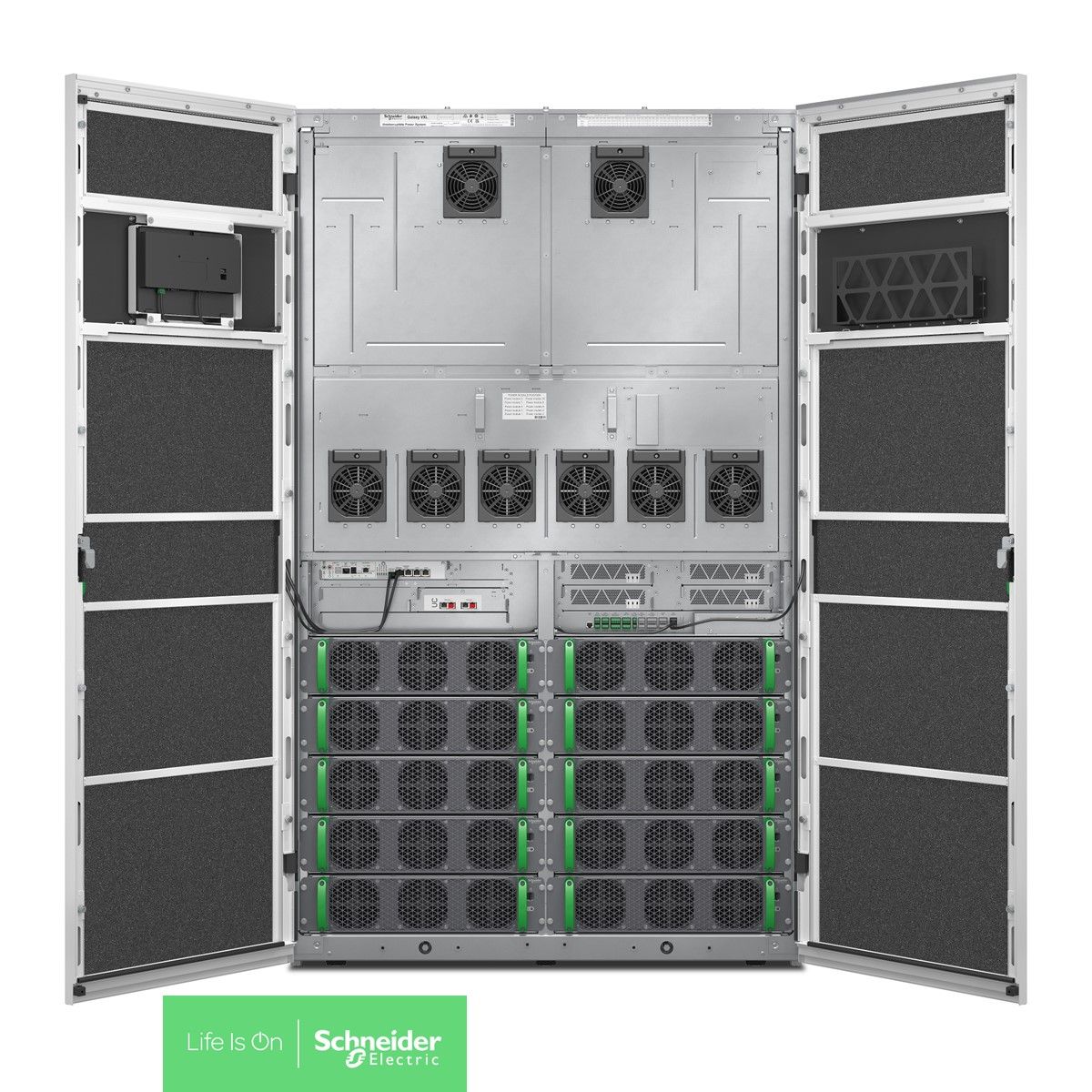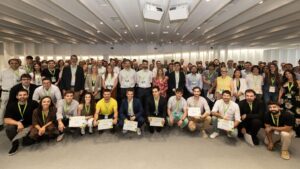Schneider Electric has taken a significant step towards the future of data centers with its latest announcement of innovative solutions designed to integrate artificial intelligence (AI) sustainably. In a context where the demand for AI systems continues to grow, the company has unveiled new architectures and products that not only aim to meet current energy needs but also reduce environmental impact.
At the core of this initiative is the GB200 NVL72 reference design, created in collaboration with NVIDIA. This design features an efficient energy architecture suitable for NVIDIA’s new Blackwell chip, allowing data centers to utilize high-density liquid cooling, with capacities of up to 132 kW per rack. This approach has been specifically optimized to facilitate the deployment of robust and sustainable infrastructures that can handle demanding AI workloads.
At the event, Schneider Electric also introduced the Galaxy VXL UPS, the most compact and highest density uninterruptible power supply system in the industry. This UPS has been designed to offer a remarkable 52% space savings compared to industry average, with power up to 1042 kW/m², allowing for efficient power supply in limited spaces.
The new solutions are part of Schneider Electric’s comprehensive approach to AI-ready data centers. The strategy focuses on three key areas: developing suitable energy strategies for the AI era, implementing advanced infrastructures, and consulting on sustainability. This global approach aims to optimize the deployment of sustainable and high-performance infrastructures, reducing their environmental footprint.
Pankaj Sharma, Executive Vice President of Data Centers & Networks at Schneider Electric, emphasizes the importance of this initiative by stating, “The energy and environmental impact of AI is growing at an unprecedented rate, and it is crucial to find new ways to decarbonize data centers and digital infrastructures.”
The collaboration with NVIDIA has been key to the development of these innovations. Both companies have worked together to create designs that incorporate liquid cooling, adaptable to different data center environments, whether enterprise or hyperscale.
Schneider Electric also highlights the importance of “energy intelligence for sustainable AI,” integrating data center infrastructure with AI applications to mitigate the energy footprint of this technology.
At a time when data center energy consumption is projected to represent 2.5% of global demand by 2027, strategies like those of Schneider Electric and NVIDIA are essential. Long-term innovation and collaboration are key to achieving a future where efficiency and sustainability are the norm, not the exception. Sean Graham, Research Director at IDC, emphasizes the sustainability promise that these strategies can offer by decarbonizing entire value chains in various industries.
Schneider Electric’s proposals not only focus on offering technological solutions, but also promote a strategic shift in energy infrastructure, incorporating renewable energy and advanced climate mitigation solutions.
Referrer: MiMub in Spanish












